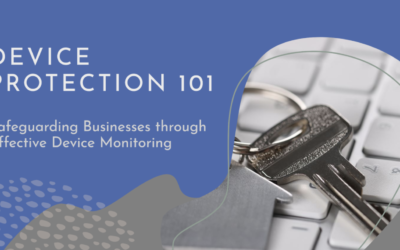One of the great benefits of Microsoft 365 is the robust policy-setting capabilities within the platform. You can have the best security features, the most user-friendly Wi-Fi setup, and the most robust data loss prevention plan in place, but if your policy setting capabilities are not comprehensive and far-reaching, you will have difficulty keeping your operation secure and compliant. Let’s look at some of the different types of policies you might come across in Microsoft 365, as well as some best practices for setting them up and using them effectively.
- Security & Compliance Policies
The Security & Compliance Center is the go-to place for all things security and compliance in Microsoft 365. From here, you can access various tools and resources to help you keep your environment secure, including the ability to create and manage policies.
There are two types of policies that can be created in the Security & Compliance Center:
- Organization-wide policies: These are policies that apply to your entire organization and can be configured by anyone with the appropriate permissions.
- User-specific policies: These are policies that only apply to specific users or groups of users, and can be configured by anyone with the appropriate permissions.
The settings for these policies are found under three major sections with the Security & Compliance Center:
Microsoft Exchange Online Protection is a cloud-based security module that protects business email inboxes from spam and malware. With EO, security teams can set and enforce communication and messaging rules with ease.
- Threat protection policies
- Real-time reports
- Automated threat investigation and response
- Attack simulation features
Office 365 Threat Intelligence uses data signals from a variety of intelligence sources such as global data centers, office clients, and compromises to give security teams the most recent information on threats to offices around the world.
- Threat explorer module
- Automated policy recommendations
- Threat feeds
- Rich analytics dashboard
Microsoft’s Compliance Manager gives security teams the capability to assess compliance risks, as well as monitor and record compliance activity within Microsoft Cloud services, allowing them to ensure that all regulatory compliance standards are met.
- Audit and assessment reports
- Role-based access control
- Compliance scoring
- Secure evidence and activity repository
- WiFi Policies
If you’re using WiFi in your organization, then you’ll need to create a WiFi policy to make sure that only authorized users can access your network. WiFi policies can be created in the Microsoft 365 admin center, and they can be applied to entire organizations or specific users and groups.
When creating a WiFi policy, you’ll need to specify the following:
- The name of the policy
- The description of the policy
- The WiFi SSID
- The WiFi password
- The type of encryption
- The type of authentication
- Whether or not users will be able to connect to the network automatically
After you’ve created your WiFi policy, you can apply it to users and groups by going to the “Users and Groups” section in the Microsoft 365 admin center and selecting the appropriate users and groups from the list. Applying a WiFi policy to a user or group will give them the ability to connect to the network automatically, as well as manage their own connection settings.
- Data Loss Prevention Policies
Organizations can use data loss prevention tools in the Office 365 Security & Compliance Center to detect, monitor, and secure highly sensitive data stored on Microsoft Office 365 services, including Exchange Online, SharePoint Online, OneDrive for Business, and Microsoft Teams.
- Automated rule enforcement
- Automatically block sensitive content
- Detailed incident reports
- Policy templates
- Web Policies – Whitelists & Blacklists
A website blacklist is a list of websites that are blocked from being accessed. A website whitelist is a list of websites that are allowed to be accessed. Both lists can be created in the Microsoft 365 admin center, and they can be applied to entire organizations or specific users and groups.
When creating a blacklist or whitelist, you ‘ll need to specify the following:
- The name of the list
- The description of the list
- The URLs that you want to block or allow
After you’ve created your blacklist or whitelist, you can apply it to users and groups by going to the “Users and Groups” section in the Microsoft 365 admin center and selecting the appropriate users and groups from the list. Applying a blacklist or whitelist to a user or group will give them the ability to access the websites on the list automatically, as well as manage their own website access settings.
- Best Practices
While it is beneficial to learn about various Microsoft 365 policies, it is equally important to learn how to practice them effectively. Some best practices for policy management in Microsoft 365 include:
- Assign a dedicated administrator to manage policies
- Use role-based access control to limit who can create and edit policies
- Create informative and descriptive names and descriptions for policies
- Test new policies before implementing them organization-wide
- Review existing policies on a regular basis
Policies are an important part of Microsoft 365, and they can help you to keep your data safe and secure. By following the best practices listed above, you can ensure that your policies are effective and easy to manage. Thanks for reading!
Do you have any questions about policy management in Microsoft 365? Email us at sales@montra.io



